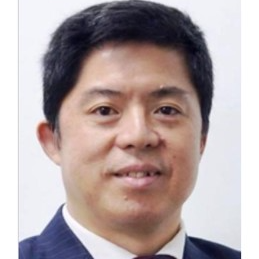Micro–Nano Bubble Technology and Its Applications
A special issue of Processes (ISSN 2227-9717). This special issue belongs to the section "Environmental and Green Processes".
Deadline for manuscript submissions: 5 June 2024 | Viewed by 1000
Special Issue Editors
Interests: drinking water security; water pollution control; sustainable urban drainage systems; water environment carrying capacity
Special Issue Information
Dear Colleagues,
The main characteristics of traditional aeration technology commonly used in water treatment are that it can produce bubbles that possess a large specific surface area and high mass transfer efficiency, increase the concentration of dissolved oxygen, and achieve the purpose of promoting the degradation of organic matter by aerobic microorganisms. Micro–nano bubbles (particle size between "10~50 μm" and "≤200 nm") have been widely used in medical, cleaning, agricultural cultivation and other fields in recent years because of their smaller particle size, larger surface area, stable existence in water for a few hours to a few days, producing a large number of hydroxyl radicals after collapse and other characteristics. Micro–nano bubble generation methods include hydraulic cavitation, dissolved gas release, ultrasonic cavitation and electrolysis. The characterization parameters of micro–nano bubbles mainly include the particle size, Zeta potential, concentration and so on. After a large number of experiments, researchers have concluded that the main factors affecting micro–nano bubbles and hydroxyl radicals are the air source, ultrasonic stimulation, pH and so on. These advances in micro–nano bubble technology can provide theoretical support for the stable generation of micro–nano bubbles and the generation of more hydroxyl radicals, thereby improving the treatment effect.
This Special Issue entitled "Micro–nano Bubble Technology and its Applications" is looking for high-quality works. Topics include, but are not limited to, the following:
- Optimization of traditional aeration technology and equipment;
- The application of traditional aeration technology;
- Optimization of micro–nano bubble formation process;
- The growth and stability mechanism of micro–nano bubbles in water;
- Degradation of contaminants or biofilm control in water purification systems or other systems;
- The application of micro–nano bubble technology;
- Similarities and differences between traditional aeration technology and micro–nano bubble technology.
Prof. Dr. Soon-Thiam Khu
Dr. Tianzhi Wang
Guest Editors
Manuscript Submission Information
Manuscripts should be submitted online at www.mdpi.com by registering and logging in to this website. Once you are registered, click here to go to the submission form. Manuscripts can be submitted until the deadline. All submissions that pass pre-check are peer-reviewed. Accepted papers will be published continuously in the journal (as soon as accepted) and will be listed together on the special issue website. Research articles, review articles as well as short communications are invited. For planned papers, a title and short abstract (about 100 words) can be sent to the Editorial Office for announcement on this website.
Submitted manuscripts should not have been published previously, nor be under consideration for publication elsewhere (except conference proceedings papers). All manuscripts are thoroughly refereed through a single-blind peer-review process. A guide for authors and other relevant information for submission of manuscripts is available on the Instructions for Authors page. Processes is an international peer-reviewed open access monthly journal published by MDPI.
Please visit the Instructions for Authors page before submitting a manuscript. The Article Processing Charge (APC) for publication in this open access journal is 2400 CHF (Swiss Francs). Submitted papers should be well formatted and use good English. Authors may use MDPI's English editing service prior to publication or during author revisions.
Keywords
- micro–nano bubble
- hydroxyl radical
- advanced oxidation
- biofilm
- pollutant degradation
- crop respiration






